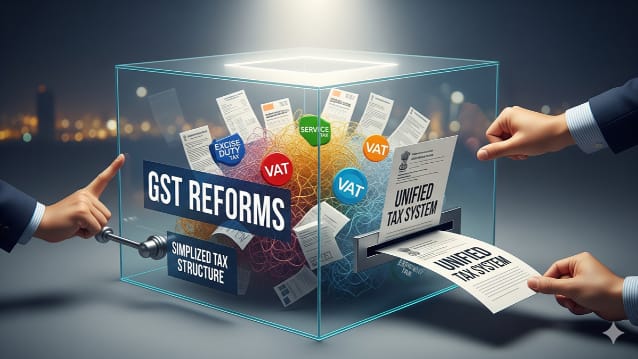The 56th GST Council meeting marks a pivotal development for India, balancing consumer-focused rate adjustments, targeted sectoral support, and ongoing simplification of the tax architecture.

The rationalization of rates is strategically designed to stimulate domestic consumption, particularly in anticipation of the upcoming festive season. (Source: AI Image)
The proposed changes represent a significant advancement towards enhancing predictability and simplifying the complexity of the GST regime. The transition of most goods to a two-slab system demonstrates the government’s commitment to addressing long-standing requests from both industry stakeholders and consumers for a more straightforward tax framework. This move is anticipated to reduce classification disputes and lessen the administrative burden on businesses.
The rationalization of rates is strategically designed to stimulate domestic consumption, particularly in anticipation of the upcoming festive season. These measures directly respond to escalating consumer prices and aim to increase disposable income among the public, thereby fostering demand-led economic recovery.
Also read: Beyond Slabs: The GST Reset That Could Redraw India’s Tax Landscape
Sector-specific initiatives further illustrate the government’s intent to leverage the GST framework to address targeted sectoral requirements and social objectives. Notably, the tax exemption on insurance is expected to enhance the accessibility of essential services for a broader population segment.
Steps to resolve persistent issues related to inverted duty structures in sectors such as man-made textiles and fertilizers are poised to improve liquidity and competitive standing by enabling these industries to claim higher input tax credits.
Despite unanimous passage of the reforms, some states have raised concerns regarding potential short-term revenue losses. Recent estimates suggest that the total revenue deficit from rate rationalization could reach approximately ₹48,000 crore. Nonetheless, the Centre maintains that increased consumption and improved compliance will likely mitigate these losses over the medium to long term.
Also read: India’s Consumption Loans Cross Rs 105 Lakh Crore in Q1 FY26, Gold Loans Surge 35%
In summary, the 56th GST Council meeting marks a pivotal development for India, balancing consumer-focused rate adjustments, targeted sectoral support, and ongoing simplification of the tax architecture. While short-term revenue challenges for states remain a consideration, the overarching assessment indicates that these reforms constitute a bold and strategic effort to boost consumption, relieve public tax burdens, and drive sustained economic growth.
Rajat Bose is Partner at Shardul Amarchand Mangaldas & Co.
Empower your business. Get practical tips, market insights, and growth strategies delivered to your inbox
By continuing you agree to our Privacy Policy & Terms & Conditions
